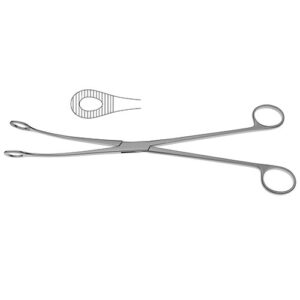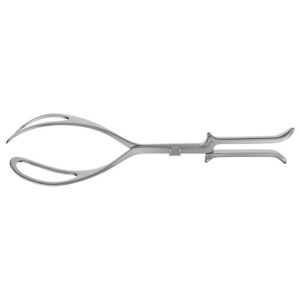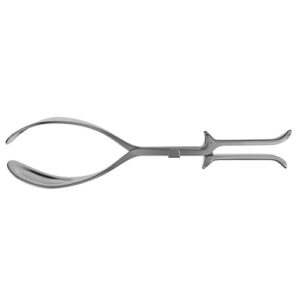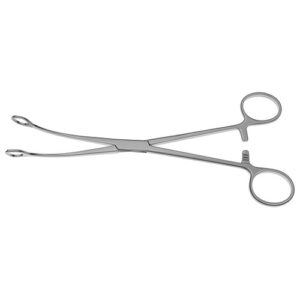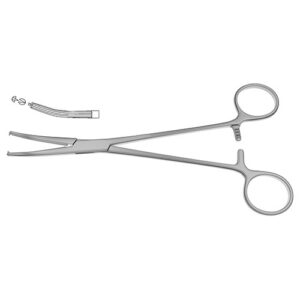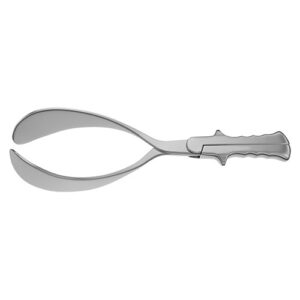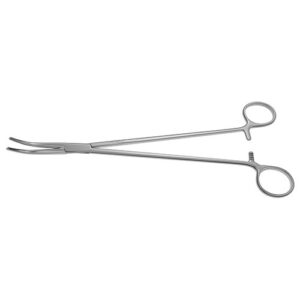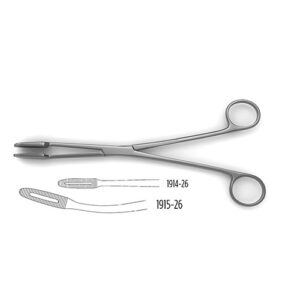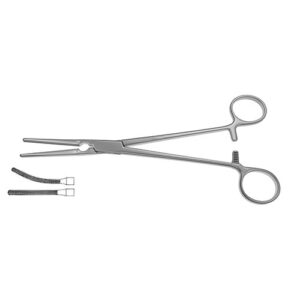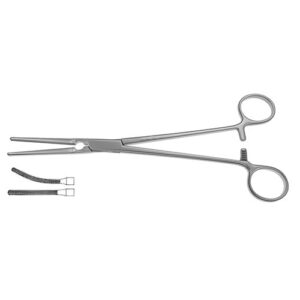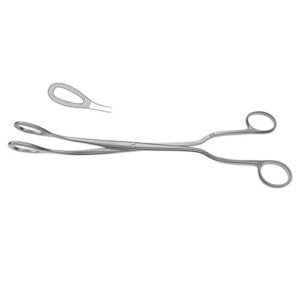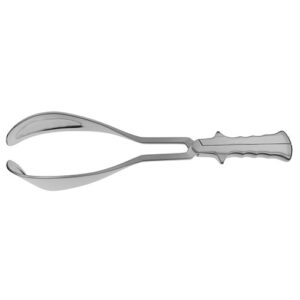Kelly Placenta Forceps
slightly curved ?Kelly Placenta Forceps are commonly used post-childbirth to aid the mother in pushing out the placenta. The forceps feature ring handles and circular clamps with serrated jaws to firmly grasp the placenta for removal. The forceps are slightly curved and are available in various lengths to accommodate a wide range of cases.
Kielland Obstetrical Forceps
Kielland-Luikart Obstetrical Forceps
Laufe Uterine Polyp Forceps
curved, serrated jaws, 8" (20.3 cm) ?Laufe Uterine Polyp Forceps feature circular clamps at the end of ring handles for use in the removal of polyps from the uterus. The circular clamps have serrated jaws to firmly grasp the polyp for removal. They are curved to optimize visualization of the operating field during procedures.
Long Hysterectomy Forceps
1 x 2 teeth, longitudinal grooves, 7-1/2" (19.1 cm) ?Long Hysterectomy Forceps feature curved blades with longitudinal grooves to firmly grip the tough ligament on both sides of the uterus during the hysterectomy procedure. The blades feature 1X2 teeth for added grip. The ring handles feature a locking mechanism to hold the blades in various positions.
Luikart-Simpson Obstetrical Forceps
14-1/8" (36.0 cm)?Luikart-Simpson Obstetrical Forceps feature curved semifenestrated cephalic blades to grasp the fetal head and aid in the delivery process. The handle is grooved to provide the obstetrician with a comfortable grip on the instrument during use. The forceps can be articulated around the fetal head to provide a firm grip and traction.
M.D. Anderson Hysterectomy Clamps
long slender atraumatic jaws w/ longitudinal serrations, curvedM.D. Anderson Hysterectomy Clamps are commonly used in hysterectomy procedures. The long, slender atraumatic jaws with longitudinal serrations are ideal in hysterectomy for grasping adnexal tissue. The forceps are available in various lengths to accommodate a wide range of cases.
Maier Dressing Forceps
Masterson-Type Hysterectomy Forceps
2x3 atraumatic teeth, 1-5/8" (41.0 mm) jaw length, 8-1/2" (21.6 cm) ?Masterson-Type Hysterectomy Forceps feature atraumatic teeth to securely grasp the tough ligament on both sides of the uterus in hysterectomy procedures with minimal tissue trauma. The ring handles feature a lock mechanism to hold the blades in position. The forceps are available with straight or curved blades to accommodate different cases.
Masterson-Type Pelvic Clamp
2x3 atraumatic teeth, 1-3/4" (45.0 mm) jaw length, 10-1/2" (26.7 cm) ?Masterson-Type Pelvic Clamp is commonly used to stabilize the pelvis during and after hysterectomy procedures. The clamp features atraumatic teeth to minimize tissue injury. Available straight or curved to accommodate a wide range of cases.
McClintock Placenta Forceps
serrated, 14.0 mm jaws, curved, 9-1/2" (24.0 cm)?McClintock Placenta Forceps are ideal for removal of the placenta after the mother has given birth. The serrated teeth on the curved jaws allow for a firm grasp on the placental tissue. The ring handles allow the obstetrician to operate the instrument comfortably and with ease.
McLane-Luikart Obstetrical Forceps
15" (38.0 cm)?McLane-Luikart Obstetrical Forceps are commonly used in the delivery process. The rounded cephalic curve of the blades is designed to grasp the unmolded fetal head and provide traction for its migration through the birth canal. The grooved handle provides the obstetrician with a comfortable and secure grip of the instrument during its use.

